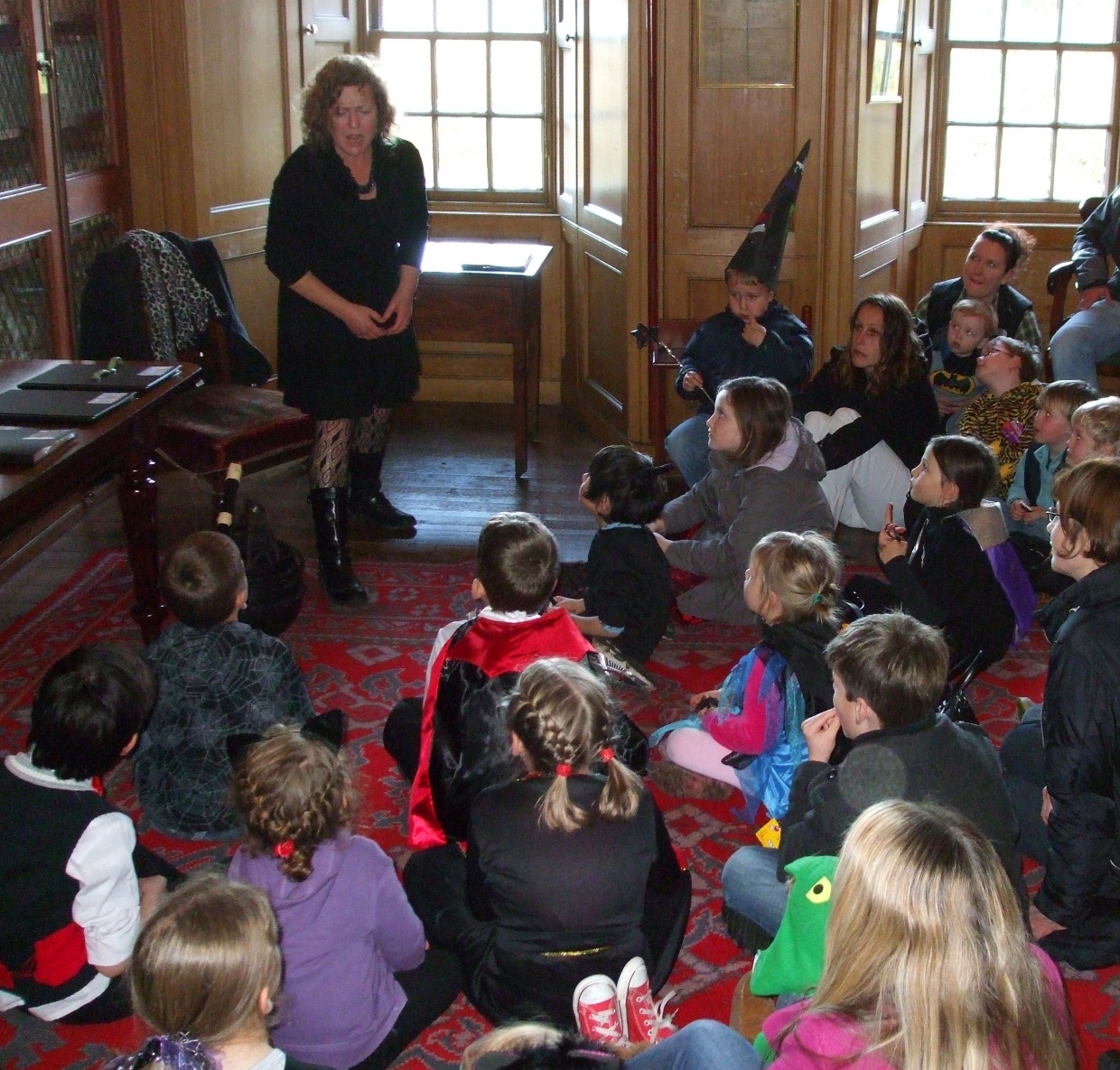On the 1st of July, storytelling sisters Mary and Marion Kenny come together to present the latest in the Art of the Storyteller workshop and performance series. Read on to learn more about their backgrounds and storytelling inspirations…

How long have you been telling stories and where do you perform?
Mary: I have been telling stories professionally for about 15 years, and perform in all the usual places: schools, libraries, festivals, big houses, museums… anywhere I am asked!
Marion: I have been storytelling professionally since 1993, so for 24 years. Like most storytellers I perform in many different ways and in a huge variation of venues with audiences of all ages and backgrounds. Museums, galleries, heritage sites, libraries, site specific locations in the landscape, hospitals, prisons, schools, nurseries, with theatre companies, at ceilidhs, book festivals, and storytelling festivals both nationally and internationally.
What would you consider the definition of good storytelling?
Mary: That which engages and includes everyone who listens, rises from the heart and goes to the heart.

What basic elements do you require for a good story?
Mary: A good beginning, middle and end strung on a beautiful, strong, colourful thread.
Marion: When I was researching with Maoris in New Zealand they said a good story should be like a strong jaw. The lower jaw is the basic story plot everyone hears, and the upper jaw has the deeper psychological meanings we then try to unravel.
A good story should have a strong plot. Plot is most often about a conflict or struggle that the main character goes through. The conflict can be with another character, or with the way things are, or within something inside the character like needs or feelings. A story can have several conflicts.
Why did you become a storyteller?
Mary: Storytelling is in my family, my heritage. As an artist I had always worked with stories visually, silently, and I was very shy. Stepping into the oral tradition helped me gain my voice, through sharing it with others and as others have done before.
Marion: Storytelling is in my family and ancestry. I have always used stories as a professional musician, actress, dancer and clown. After years of touring with professional circuses and theatre companies, it felt like absolute magic when I began storytelling in the traditional way. Without all the costumes, props, lighting, sound and cast, a simple tale told well could allow yourself and an audience to be entirely transported, to time travel and journey to far off lands.
Where do you get your stories from?
Mary: Some I have heard, some given, some read, some researched, some experienced, some seen, occasionally dreamed.
Marion: My favourite way to gather stories is directly from another storyteller using my little recording device. I’ve long had a passion for travelling the world like a little magpie gathering music, stories and dances. The School of Celtic and Scottish Studies is a fabulous resource I often visit. I also love archiving at libraries and museums, being like a detective and writing up findings into a style that’s deliverable orally. Books are a great source, as well as the magic of the internet.
What advice do you have for aspiring storytellers?
Mary: Pick one or two stories you really like, think of one or two audiences you would like to tell to, turn the story over and over, inside out and speak it to yourself (when no-one is around) then tell it, and trust yourself to tell your story beautifully.
Marion: Select stories that you really love and feel a connection with. Lie on your back and see the story scene by scene, rather than trying to cram in words. Be really aware of your audience and select material and time length appropriately for the situation.
Who is your favourite storyteller?
Mary: My Dad, Patrick Kenny – pure love and joy. And of the many great storytellers I have had the pleasure to meet, I would like to say David Campbell holds a special place for me – a generous and inspiring mentor, and a dear friend.
Marion: I adored both Duncan Williamson and Stanley Robertson who were great friends and who gave me so many stories and so much inspiration. I didn’t realise at the time how lucky I was to be part of the carrying stream of Scottish storytellers. As a child my father, Patrick Kenny, filled my mind with fairies and showed me the hollows in trees where the wee folk took their baths. My Granny like all my relatives in Donegal left out bread and milk for the little people. Again, at the time I didn’t realise I would be part of a carrying stream of tradition, in this instance from Donegal in Eire.
What is your favourite story?
Mary: Oh! I have a few – and depends on my mood, the occasion, and the context.
Marion: I have so many stories and tunes I adore, it is impossible to have a favourite.
Who is your favourite folklore/mythological character and why?
Mary: What a question! Jack over Finn, Selkies over Fairies?! So much depends upon the meeting of the story and the mood upon listening.
Marion: Jack, Finn MacCool, Schatha, Nouradin, Maui, Selkies, Arachne, Skeleton Woman, the Banshee, how is it possible to have a favourite character in a world filled with so many?! It depends on mood and occasion.
What can people expect from your afternoon workshop and evening performance?
Mary: My hope is for some vibrant, varied and informed entertainment! During the workshop I will be telling Canobie Dick, a Borders tale, and also singing Border ballad, Lord Randall.
Marion: Hopefully an interesting discussion followed by a richly varied, well delivered and enjoyable performance.
The Art of the Storyteller, Sat 1 Jul








